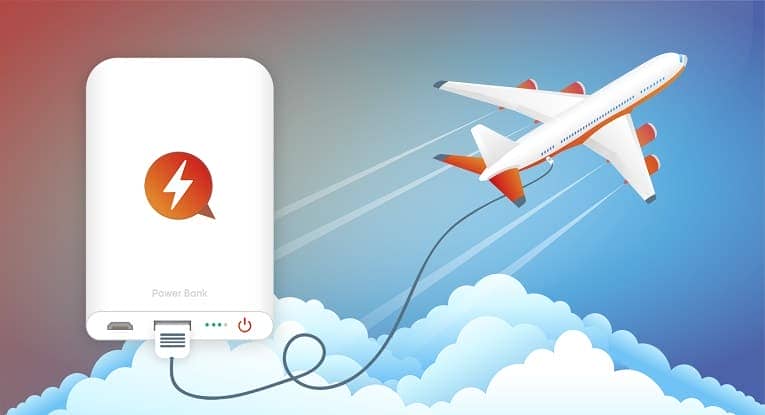Power banks are basically batteries that you can use to charge up your devices. However, there are limits regarding the number and capacity of such devices onboard due to flight safety regulations.
What is the Maximum Battery Capacity Allowed on a Plane?
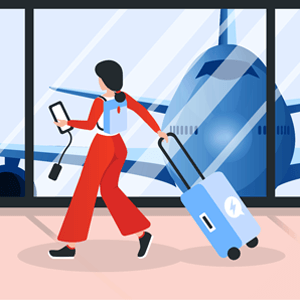
The Federal Aviation Administration (FAA) does not allow passengers to have power banks and lithium-ion batteries in their checked bags which are stored in the cargo area of the aircraft. However, passengers are permitted to board such devices in their carry-on luggage. The reason is that possible fires are easier to contain and extinguish in the cabin than in the cargo area.
How Many Power Banks Are You Allowed to Bring on a Plane?
For the power banks under 100Wh, there are no specific instructions pertaining to the number of batteries you can take on board. However, for power banks of between 100Wh and 160Wh, there is a general limit of two such devices per person.
If you want to carry more than one power bank with a capacity of more than 100Wh, you should check with the airline. For example, most American airlines allow up to two batteries within limits. However, British Airways allows up to four batteries.
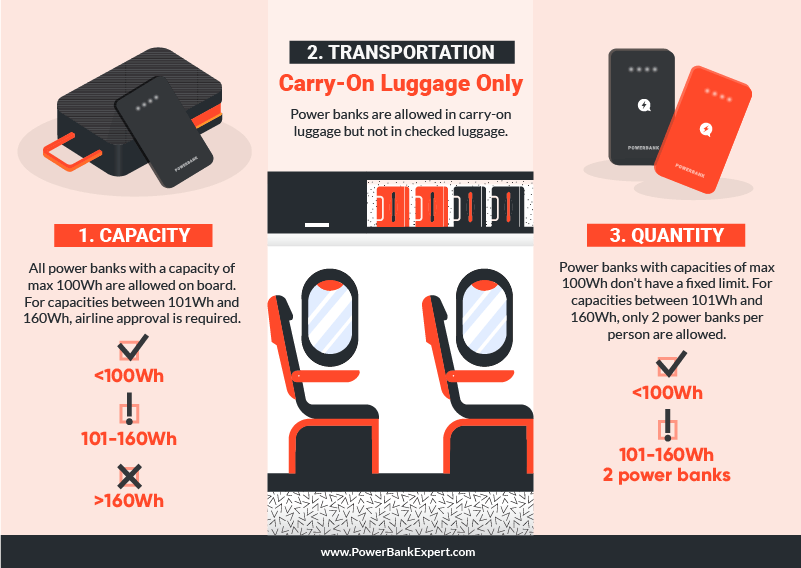
Can You Use Power Banks During the Flight?
Since a battery failure can cause a potential ignition, most flights would not allow the use of power banks. Instead, you can charge your devices using the ports on the backseats. Most commercial airplanes are now equipped with charging ports.
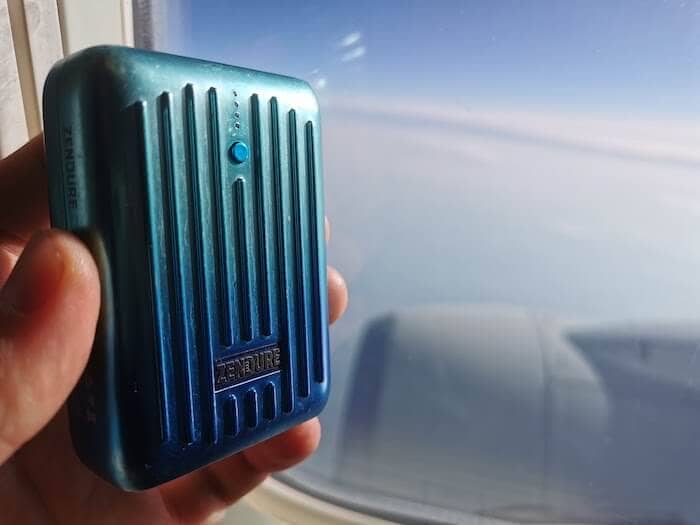
However, pay attention to the instructions given by the flight hosts at the beginning of your flight. Follow their specific instructions, but ask them before using the device if they don’t mention power banks. After all, safety comes first, and using a power bank might jeopardize flight safety.
Other Things You Should Know Before Flying With a Power Bank
You have to consider a few things when taking a power bank with you on a flight. First, you are only allowed to carry them with your hand luggage. Second, the power bank or battery must have the capacity information clearly visible on the device. Suppose the capacity is not written on your device. In that case, you can carry the power bank in the box which contains the required information.
Why Passengers Are Not Allowed to Take Their Power Banks in Checked Luggage?
Lithium-ion batteries are used in most tech gadgets due to their high capacity within a limited volume. However, the trade-off is that high-density battery cells are prone to releasing flammable gases. The gases might ignite or even explode in high temperatures or in the event of a spark. Since there is limited access to the cargo area, the fire would have a devastating toll on the aircraft. That’s why you are not allowed to put lithium-ion batteries in the luggage space.
Have Power Banks or Batteries Ever Caused Aircraft Accidents?
The IATA has reported three counts of accidents on account of batteries. In all cases, the lithium-ion batteries were loaded in the cargo area. The planes had to perform emergency landings in all incidents, and two of the accidents sustained casualties. In addition, the battery explosions had spread fire in the cargo area, creating black smoke and forcing the pilots to ditch the airplane.
Safety Regulations for Laptops and Hoverboards
Similar to power banks, laptops, and hoverboards have Li-ion batteries. However, you can put your laptop in your checked luggage but the lithium batteries in laptops must not exceed certain capacity limits. On the other hand, airlines are more cautious about hoverboards. Some airlines ban hoverboards, while others require passengers to separate the battery and carry it on board. Therefore, if you want to bring both your power bank and hoverboard, you might run into trouble with the airline.
Recommendations for Those Who Want to Take Power Banks on an Airplane
- Check the battery capacity. If the capacity is between 100Wh and 160Wh, contact your airline to ask whether they allow passengers to carry the power bank on board.
- Always put the power bank in the hand luggage and do not use it during the flight. If you must use the power bank during the flight, ask the attendants before charging a device with your power bank.
- If the capacity of your power bank is not written on it, take the box with you so that the operators can check the capacity.
- During the airport security check, place the power bank in a dedicated tray alongside other electronic devices. Example below:
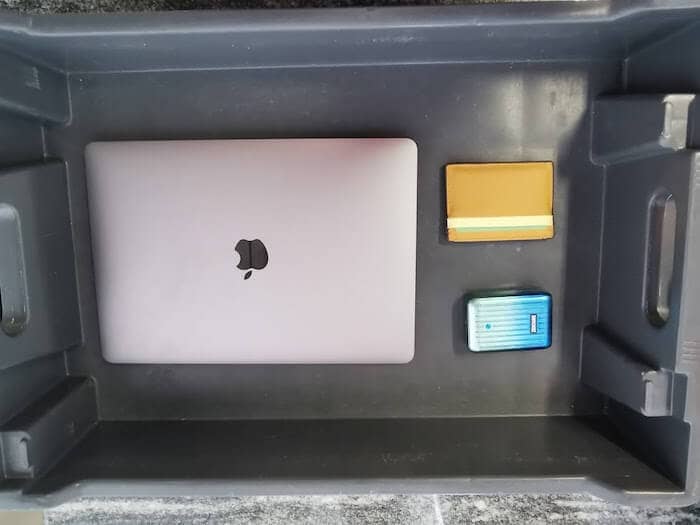
Conclusion
To sum up, when planning to travel with a power bank, it’s essential to be aware of the specific regulations set by the Federal Aviation Administration (FAA) and individual airlines. Power banks up to 100Wh are generally allowed in carry-on luggage, with a limit of two devices per person for those between 100Wh and 160Wh, subject to airline approval. It’s important to note that using power banks during flights is usually prohibited for safety reasons.
You should ensure that your power banks are clearly labeled with their capacity and are carried in hand luggage. These regulations are in place not just for compliance but also for the safety of all passengers, as underscored by past incidents involving lithium-ion batteries. By adhering to these guidelines, you can ensure a safe and hassle-free journey with your essential devices.

